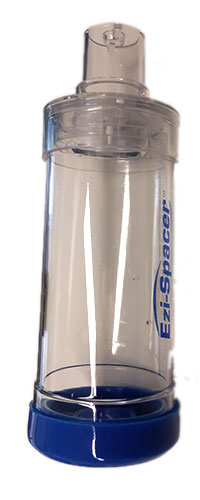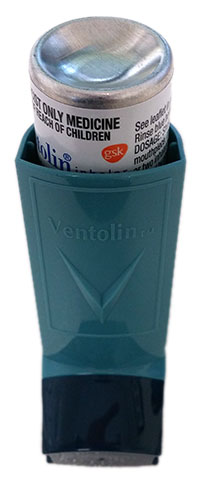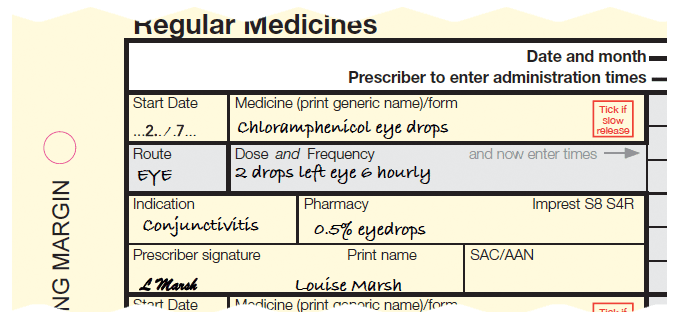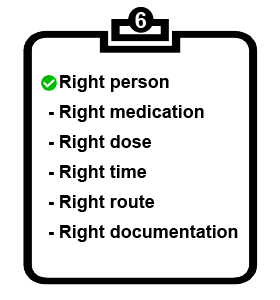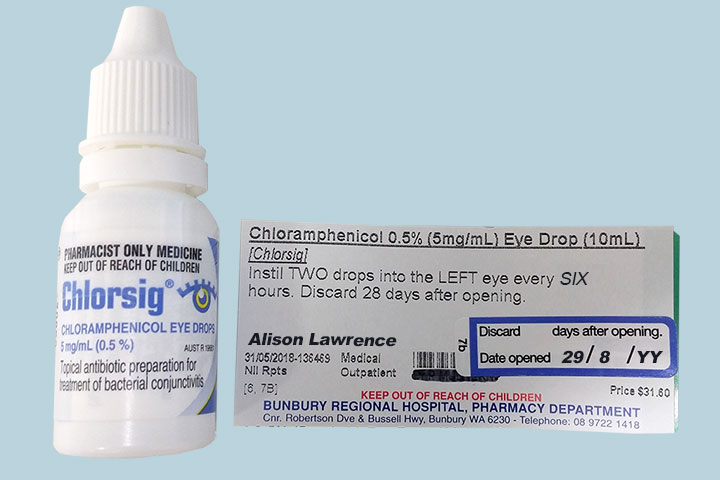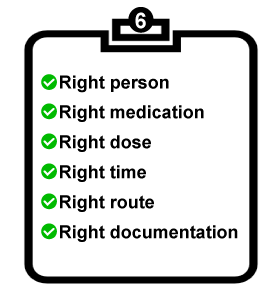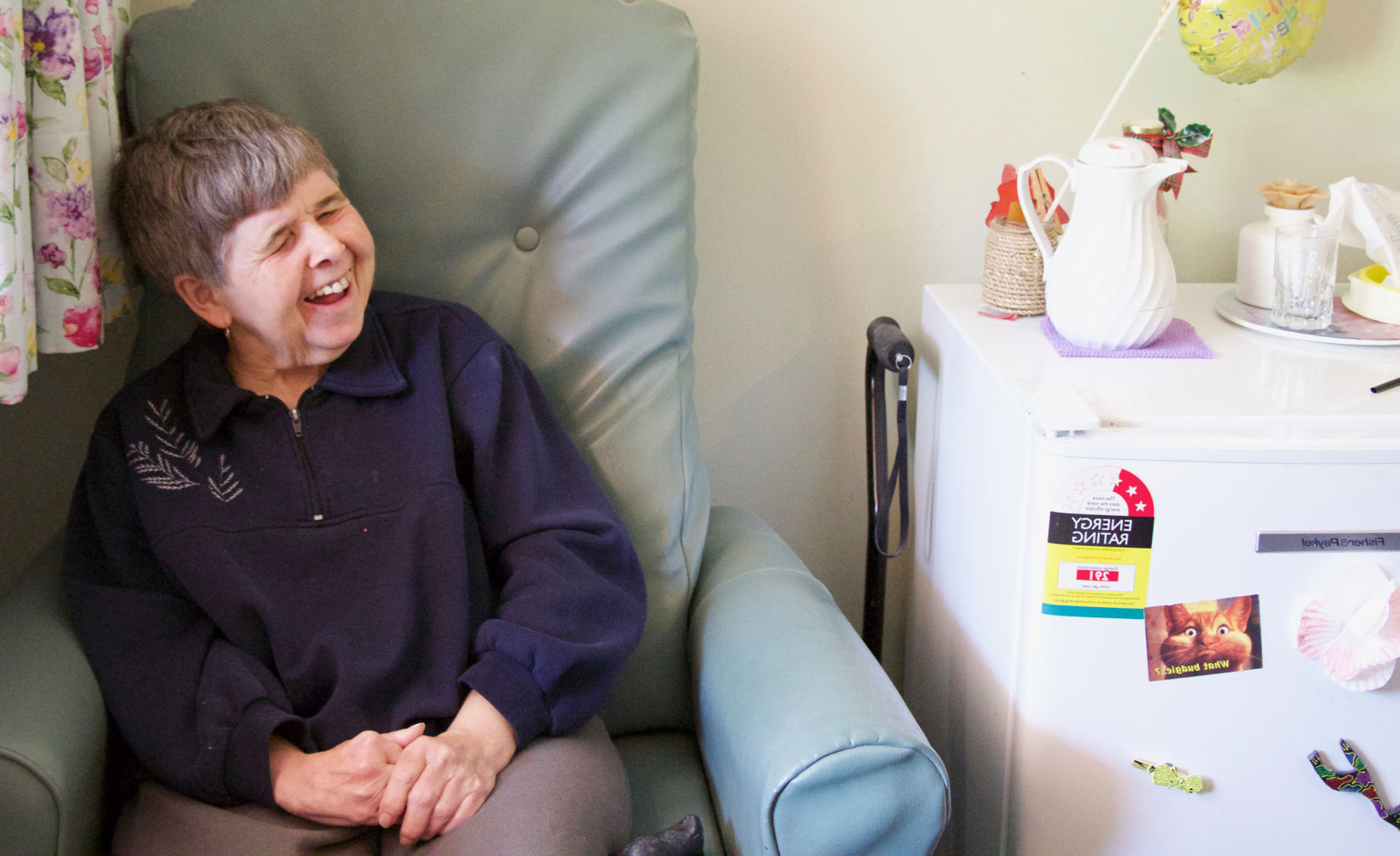Alison
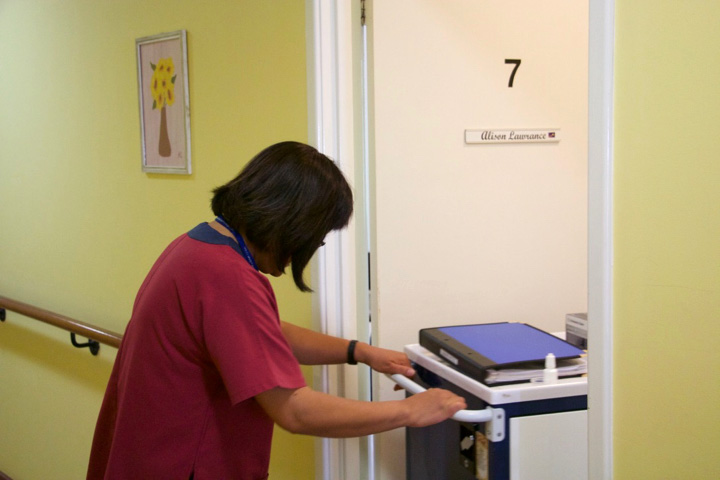
It's 12 o'clock and Jamie goes to give Alison her eye drops.
Check for any signs of deterioration
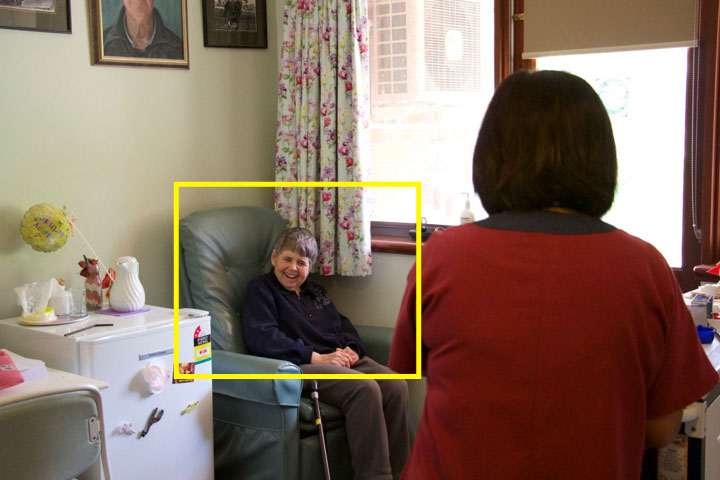
Jamie enters and keeps an eye out for any changes to Alison's appearance or behaviour.
Click Alison to check for any signs of deterioration and to see how she responds.
Alison's eye
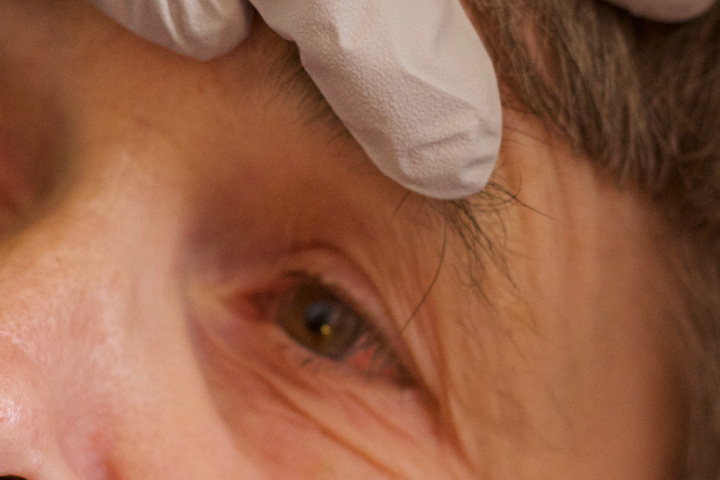
Jamie checks Alison's eye and it does look slightly red.
Should Jamie call in the RN to have a look at Alison's eye before giving her eye drops?
The RN checks Alison's eye
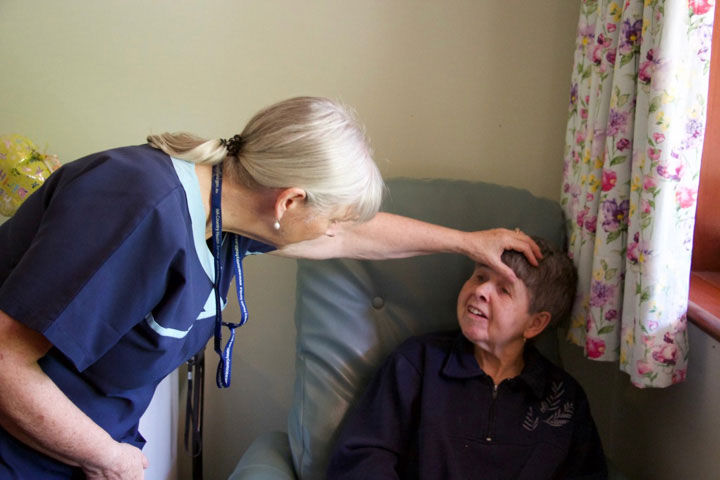
Jamie calls in the RN who looks at Alison's eye and checks the medication order.
|
Reason for nurse/midwife not administering Codes MUST be circled |
|---|
|
Absent A
|
|
Fasting F
|
|
Refused - notify Dr R
|
|
Vomiting V
|
|
On leave L
|
|
Not available - obtain supply or contact Dr N
|
|
Withheld - enter reason in clinical record W
|
|
Self Administered S
|
Exemption codes
You must always notify the RN if a resident doesn't want to take their medication.
Use a code to document situations where a medication has not been given.
Click on any codes you are unfamiliar with.
Circling exemption codes
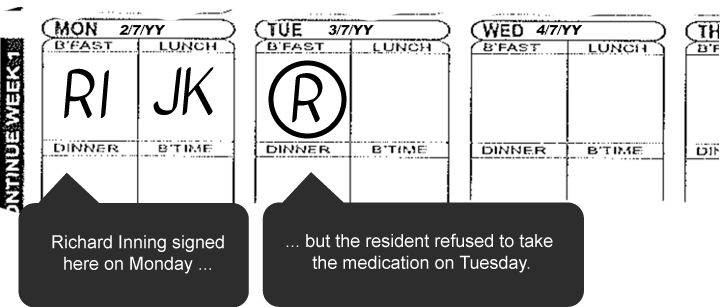
Exemption codes must be circled (like the 'R' on Tuesday on the signing sheet).
Why is this important? Type your thoughts in the white box.
Right person

Jamie now prepares to assist with Alison's medication.
Click Alison to see how she responds.
Right dose
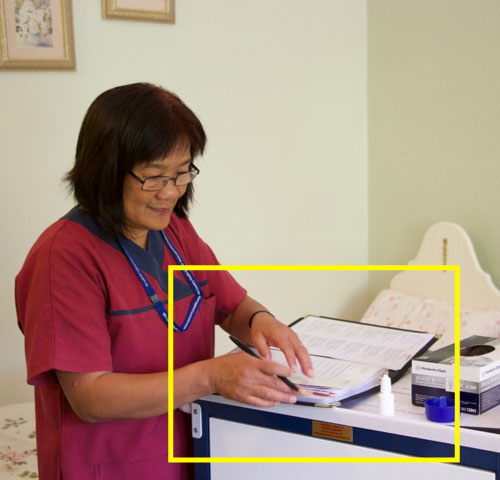
Jamie checks the medication order.
Click the medication order to check the dose.
How many eye drops does Jamie need to give Alison?
Right medication
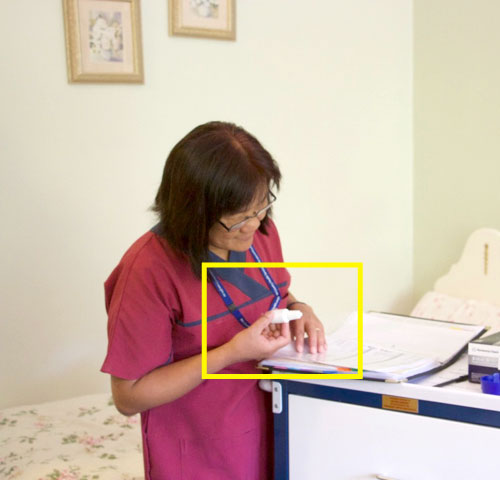
Jamie takes the eye drops from the medication trolley.
Click the eye drops to check the label.
Are these drops OK for Alison to use?
Hand hygiene

Jamie performs hand hygiene and is just about to put drops in Alison's eye.
What has Jamie forgotten?
Disposable gloves
When do you need to wear disposable gloves? Drag the items below into the correct column on the left.
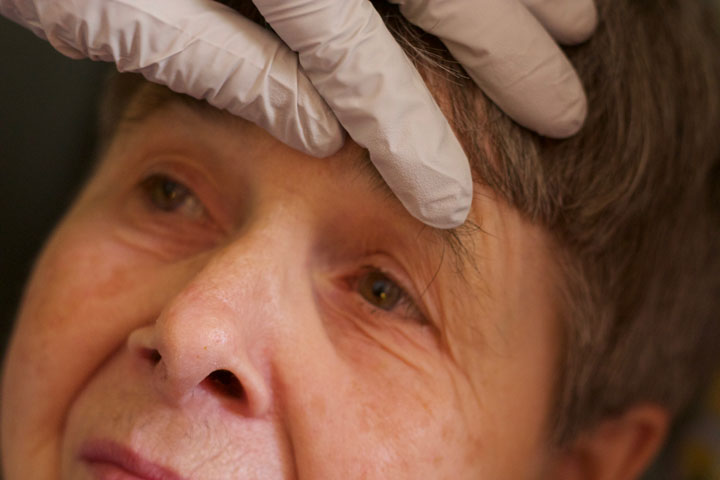
Jamie now assists Alison with her eye drops
Step 1
Identify the correct eye. Check the eye for redness, swelling or discharge.
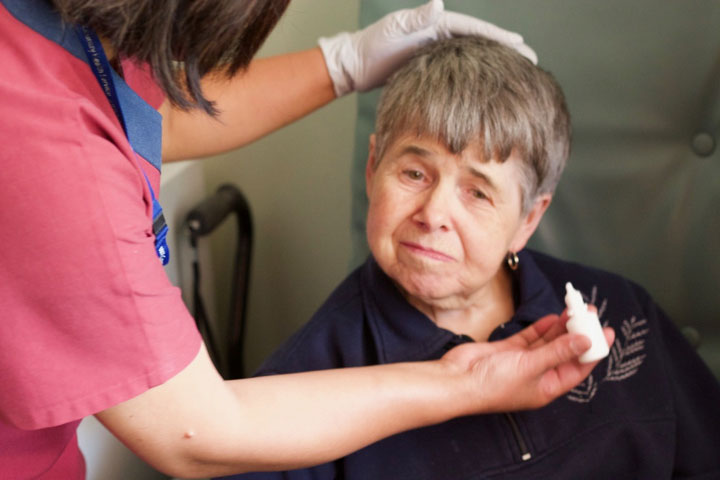
Five steps to assist with eye medication
Step 2
Position the person in a seated or upright position.
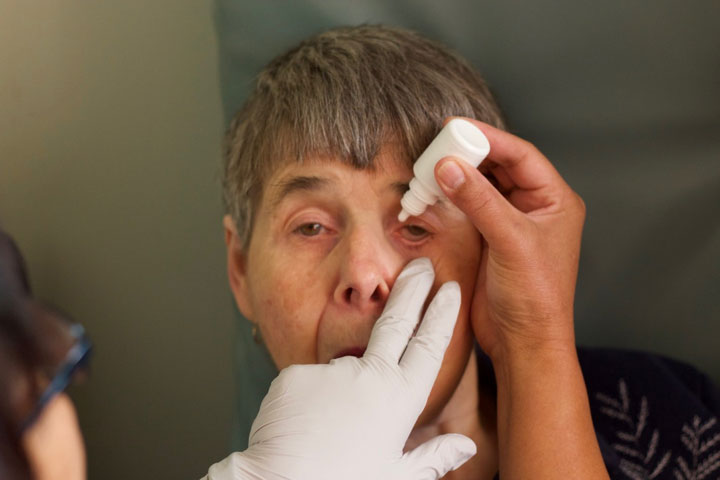
Five steps to assist with eye medication
Step 3
Pull lower eyelid gently down with forefinger to form a pocket. Tilt head slightly and ask the person to look up.
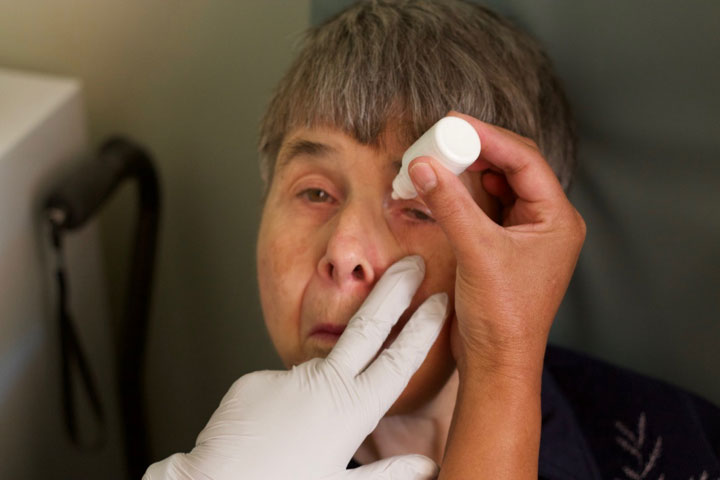
Five steps to assist with eye medication
Step 4
Instil one drop in the middle surface of the lower lid. Do not touch the eye with the dropper.

Five steps to assist with eye medication
Step 5
Ask the person to close their eyes for one minute and move eyeball from side to side to spread the medication. Repeat steps 3-5 if further drops are required.
Finishing up
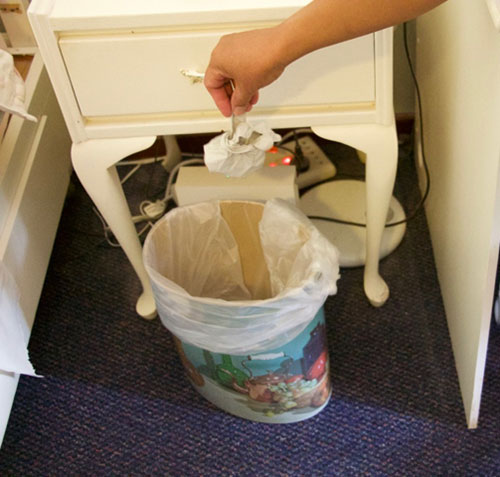
Jamie finishes up. She removes her gloves and puts them in the general waste bin. She then puts the Chloramphenicol eye drops back on the trolley.
Does she need to store the eye drops in the fridge?
Medication storage

- Medication trolley has been left unattended
- Eyedrops haven't been put away
- Used gloves have not been thrown away
- Medication keys have been left on the table
It's important to store medication correctly, but you must also store items like medication keys and trolleys in the right way.
In the picture you will find some problems with how things were left in Alison's room last week. Can you find the four problems?
Right documentation
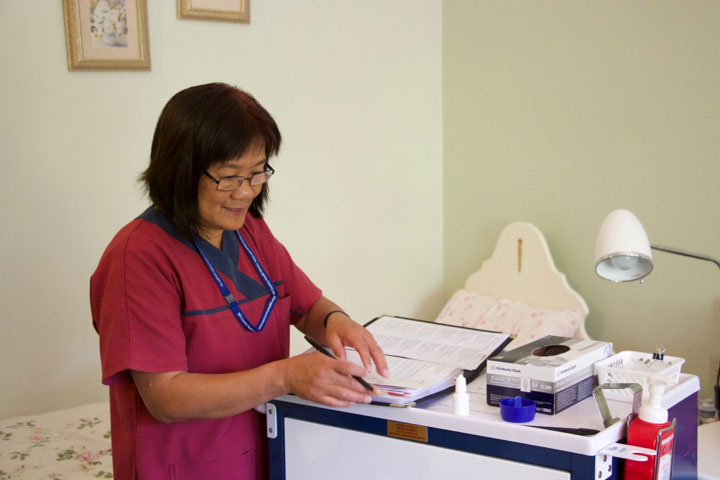
Jamie performs hand hygiene again and signs the signing sheet.
You are now ready to start your assessment for this case study.
Question 1
Alison's eye drops must be stored at room temperature once they have been opened.
Where is the best place to store her eye drops?
Question 2
Jamie noticed Alison's eye was red and slightly swollen.
What is the first thing you should do in this situation?
Question 3
What must be written on the label of a newly opened bottle of eye drops?
Question 4
The label on Alison's eye drops said 'Discard 28 days after opening'. The drops were opened on the 29th August.
By what date must the drops be discarded?
Question 5

A resident does not want to take her medication.
Which code must be used on the signing sheet shown? Click the correct code in the picture.
Congratulations
Congratulations
You have successfuly completed Medication Assistance (For the Unregulated Health Care Worker) - Eye medication (MAURd EL2).
You can now close this tab and start Transdermal medication when you are ready.
You can now start the next module: Transdermal medication when you are ready.
You might also like to:
- Explore the resources and further reading;
- Complete the short evaluation of the module - your feedback is appreciated; or
- Launch and complete the reflective practice activity tool - your feedback is appreciated; or
- Restart this module
 Tips for eye drops and ointments
Tips for eye drops and ointments
